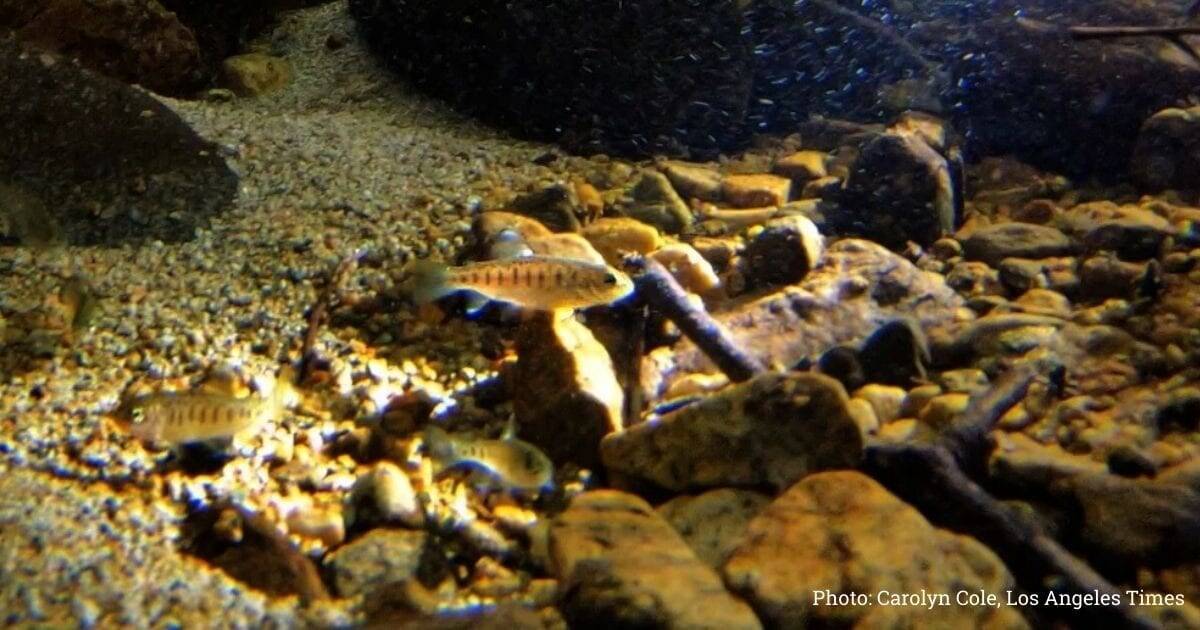Native Trout Resiliency in Southern California
The Coldwater Canyon trout in the Santa Ana mountains of Riverside County are one of two remaining native rainbow trout of steelhead lineage that far south in coastal Southern California. They were burned over in the intense Holy Fire in 2018, but thankfully survived. The fish were emergency translocated to another location before the winter rains wiped them out with extreme mud flows. With two fortunate years of cleansing rainfall, the native trout returned back to their waters earlier this year and are reproducing in this inaccessible stream, located on private property. We’d like to give acknowledgements to Riverside-Corona RCD, CDFW Region 6, and the US Forest Service as the leads on monitoring, rescuing, and returning the native trout to Coldwater Canyon.
Coldwater Creek fish rescue from California Trout on Vimeo.
These land-locked populations in Southern California are the remnants of steelhead runs over 100 years earlier. They were identified by molecular genetic analysis by a study completed in 2014, and are recognized as some of the last remaining genetic resources of these steelhead runs.
A recent post-fire native trout translocation has also occurred in the Arroyo Seco after the Bobcat Fire in the San Gabriel Mountains.
This success story is all about California resiliency. CalTrout thanks all those involved for getting this full circle, and supporting the South Coast Steelhead Coalition efforts. Thank you to SoCal Edison for funding CalTrout and California Dept of Fish and Wildlife efforts to proactively plan for post-fire translocation of native trout using a high resolution GIS framework developed by Pacific States Marine Fisheries Commission. This framework incorporates stream gradient, geography, flow, trout survey data, proximity to springs, accessibility, and fire perimeter and history maps to identify high quality habitat in Southern California mountains that have the best chance of supporting native trout populations and are least likely to burn in the near future.
Read more about our native rainbow trout sub-population expanse plan from CalTrout’s e-magazine, the Current.






1 Comment
What about Barker Valley, Palomar Mountain?